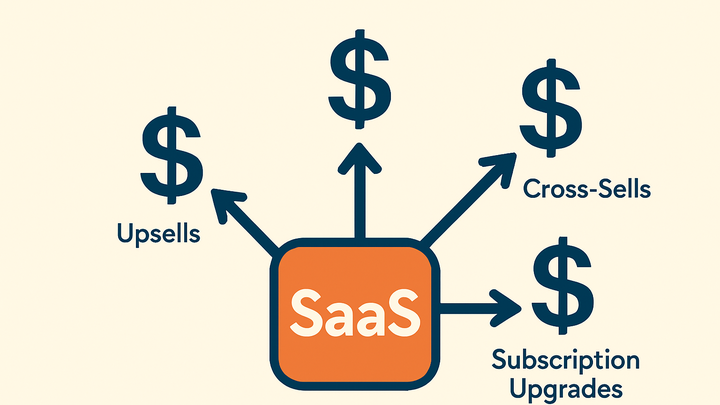Published on 2025-06-26T04:15:19Z
What is Expansion Revenue? Definition and Examples
Expansion revenue refers to the additional revenue generated from existing customers through upsells, cross-sells, add-ons, and service expansions after the initial purchase or subscription. Unlike new customer acquisition, expansion revenue leverages your current user base, making it a cost-effective and high-margin growth strategy. It encompasses upgrades in subscription tiers, purchases of complementary features, and other in-contract expansions. Tracking expansion revenue is vital for understanding customer lifetime value, measuring product-market fit, and driving sustainable SaaS growth. Analytics tools like Google Analytics 4 and PlainSignal can help monitor these events and provide actionable insights to optimize expansion strategies. Monitoring this metric empowers teams to identify growth opportunities and reduce churn risk.
Expansion revenue
Additional revenue from existing customers through upsells, cross-sells, and service expansions.
Why Expansion Revenue Matters
Expansion revenue drives sustainable growth by leveraging existing customers, reducing acquisition costs, and improving overall profitability. By focusing on your current user base, you can maximize the value of each customer relationship and boost customer lifetime value. High expansion rates often indicate strong product-market fit and high customer satisfaction. Conversely, low or negative expansion revenue can signal churn risks or product limitations. Monitoring this metric helps prioritize customer success and product development efforts.
-
Cost efficiency
Expanding revenue from existing customers is more cost-effective than acquiring new ones, leading to higher profit margins.
-
Customer lifetime value (cltv)
Increasing spend per customer boosts CLTV and enhances the long-term revenue potential of your business.
-
Market validation
Consistent expansion revenue indicates product-market fit, demonstrating that customers find ongoing value in your offerings.
How to Calculate Expansion Revenue
Expansion revenue is calculated by measuring the net increase in revenue from existing customers over a given period. This involves summing all upsell and cross-sell revenue and subtracting any revenue lost due to downgrades or contraction. Tracking expansion revenue alongside other SaaS metrics offers a comprehensive view of customer health and growth dynamics.
-
Track upsells and cross-sells
Sum all additional charges from customers upgrading their plan or purchasing add-on features.
-
Subtract contraction revenue
Deduct revenue lost from customers downgrading their plan or reducing usage.
-
Apply the formula
Use the formula: Expansion Revenue = Expansion MRR - Contraction MRR to quantify net growth.
Tracking Expansion Revenue with Analytics Tools
You can monitor expansion revenue events using analytics platforms by sending custom events or e-commerce parameters. Both Google Analytics 4 and PlainSignal allow you to capture revenue metrics tied to specific user actions and subscription events.
-
Google analytics 4
Configure purchase or subscription events with parameters like value, currency, and item_id. Use GA4’s monetization reports to segment revenue by subscription type and track upsell or cross-sell activity.
-
PlainSignal
Use PlainSignal’s lightweight, cookie-free analytics to log custom expansion events directly on your site.
-
Implementation code
Embed the PlainSignal script and trigger a custom event when an expansion occurs, including the revenue value.
-
Example tracking code
<link rel="preconnect" href="//eu.plainsignal.com/" crossorigin /> <script defer data-do="yourwebsitedomain.com" data-id="0GQV1xmtzQQ" data-api="//eu.plainsignal.com" src="//cdn.plainsignal.com/plainsignal-min.js"></script> <script> document.addEventListener('DOMContentLoaded', function() { PlainSignal.track('expansion_revenue', { revenue: 250, subscriptionTier: 'Pro' }); }); </script>
-
Best Practices to Drive Expansion Revenue
Implement strategic approaches to encourage existing customers to upgrade or purchase additional services. Combining data-driven insights with proactive engagement can significantly boost expansion revenue.
-
Segment your customers
Identify high-value segments based on usage patterns, tenure, or product adoption, and target them with relevant upsell offers.
-
Leverage usage analytics
Use product analytics to detect power users or feature gaps and suggest add-ons that align with their workflow.
-
Enhance customer success
Proactively engage with customers to understand their goals, offer training, and reveal opportunities for expansion.
